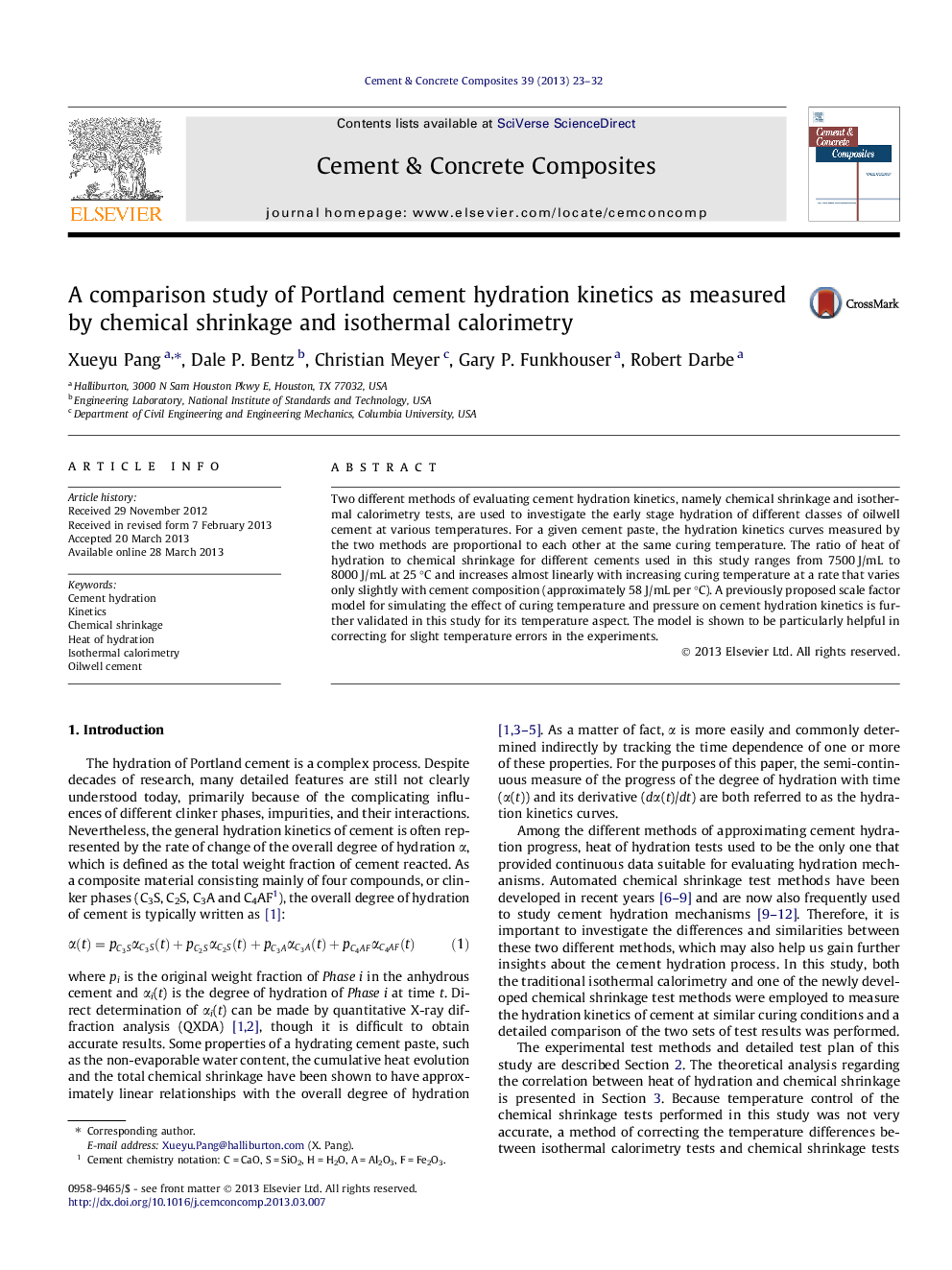| Article ID | Journal | Published Year | Pages | File Type |
|---|---|---|---|---|
| 1454890 | Cement and Concrete Composites | 2013 | 10 Pages |
Two different methods of evaluating cement hydration kinetics, namely chemical shrinkage and isothermal calorimetry tests, are used to investigate the early stage hydration of different classes of oilwell cement at various temperatures. For a given cement paste, the hydration kinetics curves measured by the two methods are proportional to each other at the same curing temperature. The ratio of heat of hydration to chemical shrinkage for different cements used in this study ranges from 7500 J/mL to 8000 J/mL at 25 °C and increases almost linearly with increasing curing temperature at a rate that varies only slightly with cement composition (approximately 58 J/mL per °C). A previously proposed scale factor model for simulating the effect of curing temperature and pressure on cement hydration kinetics is further validated in this study for its temperature aspect. The model is shown to be particularly helpful in correcting for slight temperature errors in the experiments.
